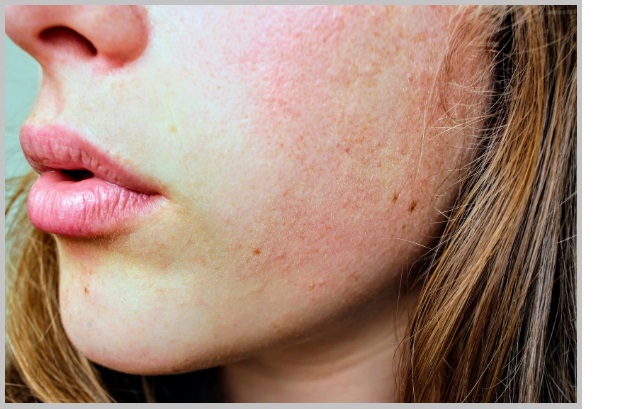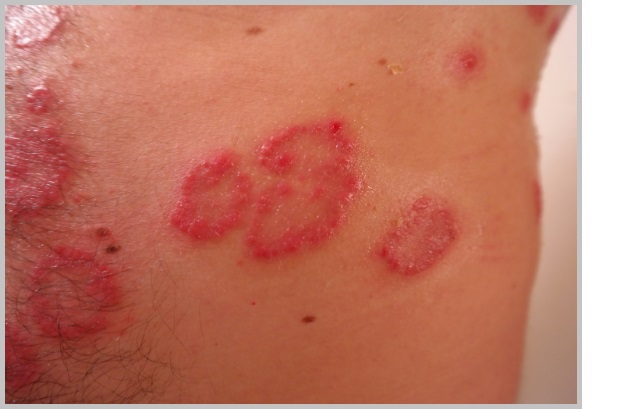 Skin irritations are caused by a variety of factors. These include heat, immune system disorders,
medications and infections. When an allergen is responsible for triggering an immune system response,
the irritation is an allergic skin condition.
Skin irritations are caused by a variety of factors. These include heat, immune system disorders,
medications and infections. When an allergen is responsible for triggering an immune system response,
the irritation is an allergic skin condition.
Dermatitis (Eczema) or Allergic Contact Dermatitis occurs when your skin comes in direct contact
with an allergen. For instance, if you have a nickel allergy and your skin comes in contact with jewelry
made with even a very small amount of nickel, you may develop red, bumpy, scaly, itchy or swollen skin at
the point of contact.
Atopic dermatitis (Eczema) is a chronic skin condition related to immune disfunction in the
layers of the skin. It usually begins in infancy or early childhood. It is often associated with asthma,
allergic rhinitis (hay fever) or food allergy. This progressive sequence is called the atopic march.
Coming in contact with poison ivy, poison oak and poison sumac can also cause allergic dermatitis.
The red, itchy rash is caused by an oily coating covering these plants. The allergic reaction can come
from touching these plants, or by touching clothing, pets or even gardening tools that have come in
contact with the oil. Additionally, some individuals with eczema have a food sensitivity which can
worsen eczema symptoms.
Urticaria (Hives) are an inflammation of the skin triggered when the immune system releases
histamine, causing small blood vessels to leak leading to swelling in the skin. Swelling in deep
layers of the skin is called angioedema. There are two kinds of hives – acute and chronic.
Acute cases happen after eating a particular food or coming in contact with a particular substance
trigger. Chronic hives can last for months or years.
Hives can result from non-allergic causes such as heat or exercise. Hives can also be an allergic
reaction to medications, foods or insect bites.
Although often uncomfortable and sometimes painful, hives and eczema are not contagious.
Angioedema is swelling in the deep layers of the skin, often seen with urticaria (hives).
Angioedema most often occurs in soft tissues such as the eyelids, mouth or genitals.
Angioedema is called "acute" if the condition lasts only a short time (minutes to days).
This is commonly caused by an allergic reaction to medications or foods.
Chronic recurrent angioedema is when the condition returns over a long period of time.
It most often does not have an identifiable cause.
Hereditary angiodema (HAE) is a rare, but serious genetic condition involving swelling in
various body parts including the hands, feet, face, intestinal wall and airways.
Keep pace with the latest information on allergies and connect with others. Join us on Facebook.
 Redness, swelling and itching are common to most skin allergies. Yet there are some differences that help in the
diagnosis of specific conditions.
Redness, swelling and itching are common to most skin allergies. Yet there are some differences that help in the
diagnosis of specific conditions.
In infants, eczema often appears on the cheeks, forehead or scalp. Children are prone to have the rash at the bend
of the elbow joint, wrists, behind the knees and behind the ears. Adolescents and young adults typically have the
rash in the same locations as children, as well as on the hands and feet.
People with atopic dermatitis can also have an extra crease, called a Dennie’s line, across the lower eyelids. However,
the most common dermatitis symptoms are listed below.
Dermatitis (Eczema) Symptoms:
- Itchy bumps, blisters or very dry skin
- Bumps appear as red to brownish-gray colored patches
- Bumps may “weep” or leak fluid that crusts over when scratched
Hives (urticaria), involve red, itchy, swollen areas of the skin that range in size and appear anywhere on the body. They can appear suddenly, and may be the result of an allergic reaction. Some people have chronic urticaria that occurs almost daily for months or, in some cases, years. Treatment with oral antihistamines is frequently successful, but in severe cases, steroids may be needed. In addition to allergic reactions to medications, foods, or other substances, hives may be triggered by viral infections, temperature extremes, water, sun, and physical exercise.

